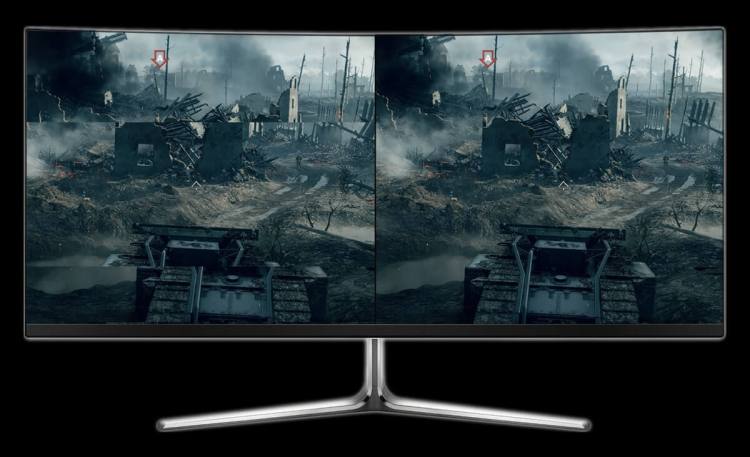Advanced Micro Devices is introducing Radeon FreeSync 2, a new display technology that will enable monitors to show the exact intended image pixels that a game or other application wants to. The result will be better image quality for gamers, according to AMD.
With the FreeSync 2 specification, monitor makers will be able to create higher-quality monitors that build on the two-year-old FreeSync technology. Sunnyvale, Calif.-based AMD is on a quest for “pixel perfection,” said David Glen, senior fellow at AMD, in a press briefing. With FreeSync 2, you won’t have to mess with your monitor’s settings to get the perfect setting for your game, Glen said. It will be plug-and-play, deliver brilliant pixels that have twice as much color gamut and brightness over other monitors, and have low-latency performance for high-speed games.
“We’re really excited about the image quality and the journey to pixel perfection, and the journey to gaming perfection, this represents,” Glen said.
AMD’s FreeSync technology and Nvidia’s rival G-Sync allow a graphics card to adjust the monitor’s refresh rate on the fly, matching it to the computer’s frame rate. This synchronization prevents the screen-tearing effect — with visibly mismatched graphics on different parts of the screen — which happens when the refresh rate of the display is out of sync with the computer. G-Sync prevents that with a hardware module that is built into every supported monitor. FreeSync has no such module, as it uses a variable refresh rate that is part of the DisplayPort and HDMI standards (connectors for you TV or monitor). That has made FreeSync monitors cheaper than G-Sync monitors.
FreeSync launched in early 2015. AMD updated it several times, extending the standard from DisplayPort to HDMI. AMD has an open ecosystem, with a wide variety of monitor makers involved.
“We made a commitment to constantly improving FreeSync,” Glen said. “We have been able to grow at a fantastic rate.”
About 121 FreeSync displays are currently on the market, about six times as many G-Sync monitors, Glen said.
But the FreeSync tech is missing some things. High-dynamic range (HDR) rendering is a decade-old technique, which makes it easier to see high contrast images with dark regions and bright regions at the same time. It makes for much more vivid imagery.
But it has been limited by sRGB (a standard red-green-blue RGB color space), funneling everything down to a thin straw over a cable, Glen said. One solution is HDR Transport. HDR-10 and Dolby Vision support a new transport space with eight times the volume that can unlock HDR rendering so it can provide great-quality pixels to the display. But that’s a lot of work for the monitor to do, and it takes a long time and power to do it. So the result is long input lags. For gamers, that’s not a good solution.

Above: FreeSync 2 renders HDR images the way they are supposed to look.
AMD has another solution with FreeSync 2, which is about unlocking the full potential of the pixels that are coming with panels in 2017.
“With FreeSync 2, we will provide to the game engine the native characteristics of the monitor you have attached,” Glen said. “That’s going to be individualized for every monitor. If you plug in a monitor with more capability, the game will be told. This provides the best possible image quality result on the monitor you have on your desk.”
Pixels come in over DisplayPort or HDMI, tuned to the monitor that you are using, with no additional input lag, Glen said. FreeSync 2 sets a high bar for image quality, and it will exist in parallel with FreeSync monitors. FreeSync 2 has mandatory low-latency for the monitor in all of its modes. It won’t get FreeSync 2 certification unless it has a maximum of a few milliseconds of input lag, Glen said. It also makes mandatory low-frame-rate compensation.
One of the supporters is Samsung, whose line-up is mostly FreeSync certified.
VentureBeat's mission is to be a digital town square for technical decision-makers to gain knowledge about transformative enterprise technology and transact. Learn More

